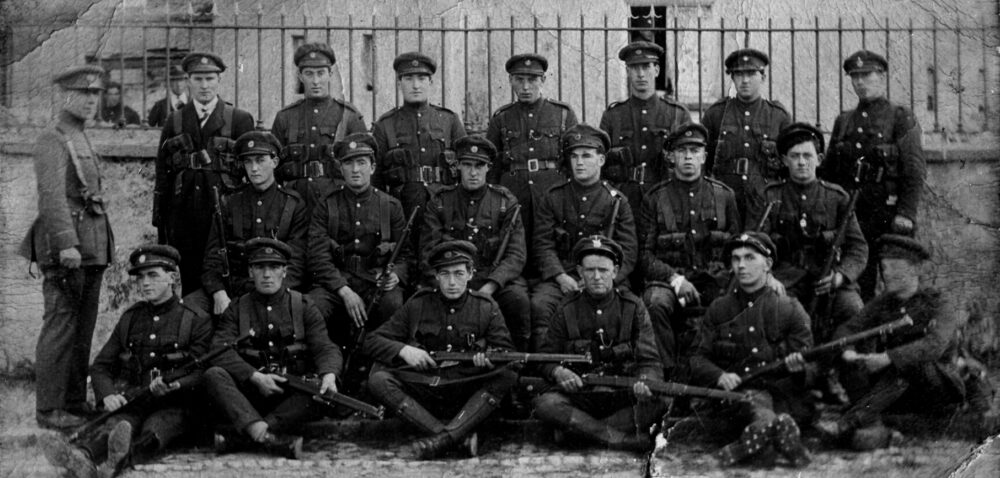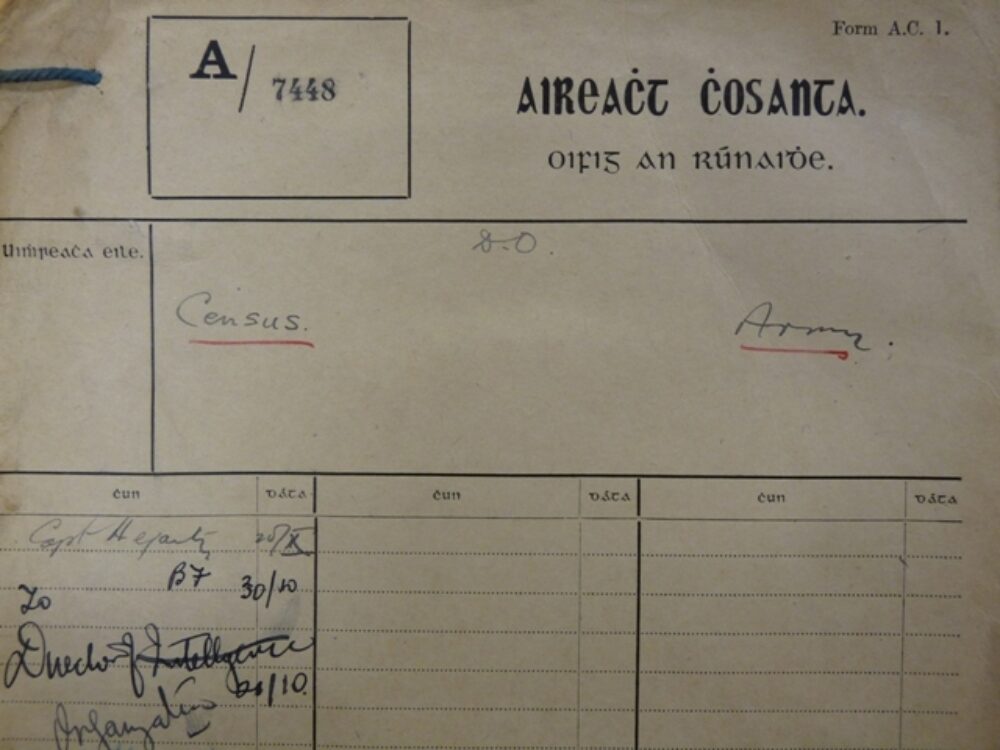Methodology and aims of the project
The 90th Anniversary of the carrying out of the Army Census occured on 12th/13th November 2012. The Census returns are a valuable source of information on any person serving in the National Army in November 1922 and as such are of particular use to researchers working on genealogical queries.
In January 2012, Military Archives commenced work on a project to make the records of the Army Census available to a wider audience. Due to the personal nature of the details recorded in the Census Returns, including name, address and next of kin, the first step was to determine whether this information could legally be released into the public domain. Contact with the Office of the Data Protection Commissioner established that the records could be released with some provisos, for example any person desiring to have their relatives’ details removed can do so by informing us of their wish.
The project was then divided into three distinct phases.
Phase 1 Digitisation of Census Returns
The first phase was to capture a digital image of every page in each volume of Census Returns. Following an analysis of the various methods of digitisation available to us, it was determined that photography would be the most suitable option for this project. The decision was largely influenced by the size of the pages (greater than A3) and the tight leather and card bindings on each volume, which are still in excellent condition.
The returns were bound in 10 volumes arranged alphabetically by post and the first step was to clearly tag where the returns for each post began and ended. Each page was then photographed and the images held in Raw, TIFF and PDF formats. The Raw images serve as the Preservation Masters, the TIFF images can be used in our reading room or can be manipulated as required for future projects and the PDFs have been stitched together by post for use on this website.
Phase 2 Mapping of Posts
The second phase of the project was to determine the best means of presenting the information available in the Census Returns to the public. One of our primary aims, discussed in Phase 3 below, is to provide a basic search function whereby a researcher can enter a soldier’s name and retrieve any references made to that name.
However the Census Returns are of more value than just the genealogical information they contain. They are also useful in establishing where units were concentrated, or the strength of individual posts, or even the local ‘native’ or introduced ‘foreign’ composition of the units. Mapping the posts on an Ordnance Survey Map of Ireland and linking a pdf of each post to that point on the map offered the best means of displaying this information. While every effort has been made to identify the precise location of each post by using the data available in the return, we cannot guarantee that each point on the map is absolutely accurate. For example small outposts located in private houses have proved particularly difficult to identify, along with the 2nd & 3rd Northern Division stationed in the environs of the Curragh Camp which encompasses over 400 soldiers. There are 296 posts within the census collection and, due to the limitations within the Google Map inferface, we have had to create 2 separate maps each containing circa 150 posts. These maps are titled A - G and H - Y. An index to the post listed in each map is available to the user by clicking on the hyperlink option at the bottom of each map. While the users of this collection should not need a Google account to view the documents, Military Archives recommends that the users have a Google account. Google accounts can be obtained here
Phase 3 Index of Census Returns
The third and final phase of this project has now been completed.
Individual entries on the census returns have been painstakingly retyped to create a searchable database of every soldier recorded. This was the most labour intensive element of this project but the end result is possibly the most useful. This feature enables a search by forename and/or surname of the entire collection and will return the results of the search in a webpage with a link to the Census Record. As an additional feature to the project the user will also have the capability to generate the results from a county wide search.





